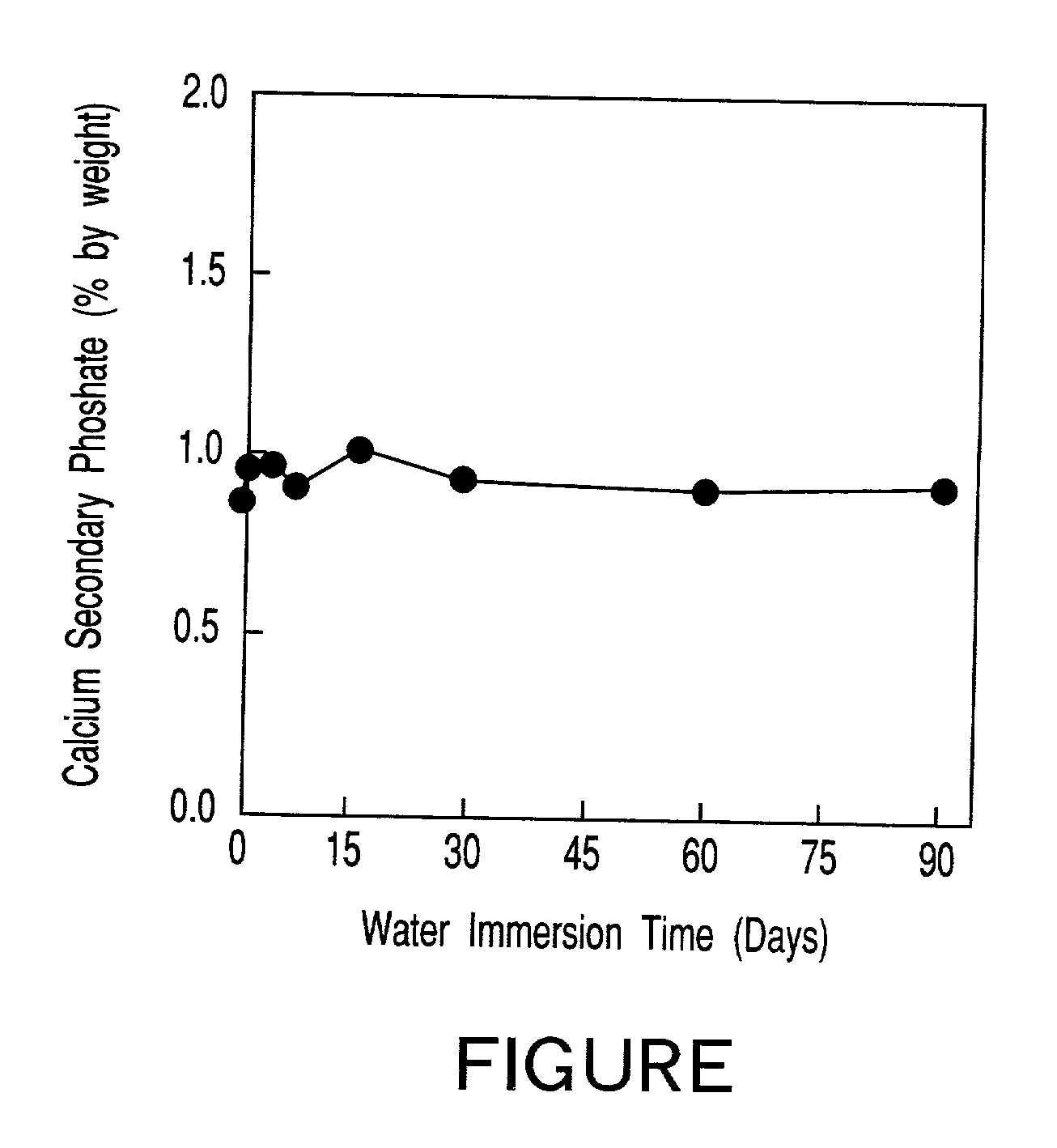Biodegradable cellulose acetate structure and tobacco filter
a technology of cellulose acetate and structure, which is applied in the direction of tobacco, tobacco treatment, transportation and packaging, etc., can solve the problems of acetic acid odor generation, high biodegradability of cellulose acetate, and long time required for tobacco filter to be completely biodegraded,
- Summary
- Abstract
- Description
- Claims
- Application Information
AI Technical Summary
Problems solved by technology
Method used
Image
Examples
example 2
[0063] A cellulose acetate solution was prepared by dissolving cellulose acetate flakes (DS=2.5) in acetone to have the cellulose acetate concentration of 28% by weight. Then, calcium secondary phosphate was added to the solution in an amount of 5% by weight based on the cellulose acetate, followed by stirring the resultant solution. The resultant cellulose acetate solution was casted on a glass plate, followed by drying the cast solution so as to obtain a cellulose acetate film having a thickness of about 100 .mu.m.
example 3
[0064] A cellulose acetate solution was prepared by dissolving cellulose acetate flakes (DS=2.5) in acetone to have the cellulose acetate concentration of 28% by weight. Then, cellulose phosphate was added to the solution in an amount of 5% by weight based on the cellulose acetate, followed by stirring the resultant solution. The resultant cellulose acetate solution was casted on a glass plate, followed by drying the cast solution so as to obtain a cellulose acetate film having a thickness of about 100 .mu.m.
example 5
[0079] Cellulose acetate (DS: 2.5) was dissolved in acetone in a concentration of 28% by weight, followed by adding titanium oxide particles having a weight average particle diameter of 0.2 .mu.m to the resultant solution in an amount of 0.5% by weight based on the amount of cellulose acetate while stirring the system so as to obtain a uniform dispersion. Then, calcium secondary phosphate having a weight average particle diameter of 1.20 .mu.m was added to the resultant dispersion in an amount of 1% by weight based on the amount of cellulose acetate while stirring the dispersion until the added calcium secondary phosphate was dispersed uniformly so as to obtain a spinning stock solution. A cellulose acetate fiber tow and a tobacco filter were prepared as in Example 4 by using the spinning stock solution thus obtained.
[0080] The cellulose acetate fiber tow and the tobacco filter thus obtained were observed. It has been found that the moldability of the cellulose acetate fiber tow and...
PUM
| Property | Measurement | Unit |
|---|---|---|
| solubility | aaaaa | aaaaa |
| length | aaaaa | aaaaa |
| temperature | aaaaa | aaaaa |
Abstract
Description
Claims
Application Information
 Login to View More
Login to View More - R&D
- Intellectual Property
- Life Sciences
- Materials
- Tech Scout
- Unparalleled Data Quality
- Higher Quality Content
- 60% Fewer Hallucinations
Browse by: Latest US Patents, China's latest patents, Technical Efficacy Thesaurus, Application Domain, Technology Topic, Popular Technical Reports.
© 2025 PatSnap. All rights reserved.Legal|Privacy policy|Modern Slavery Act Transparency Statement|Sitemap|About US| Contact US: help@patsnap.com

